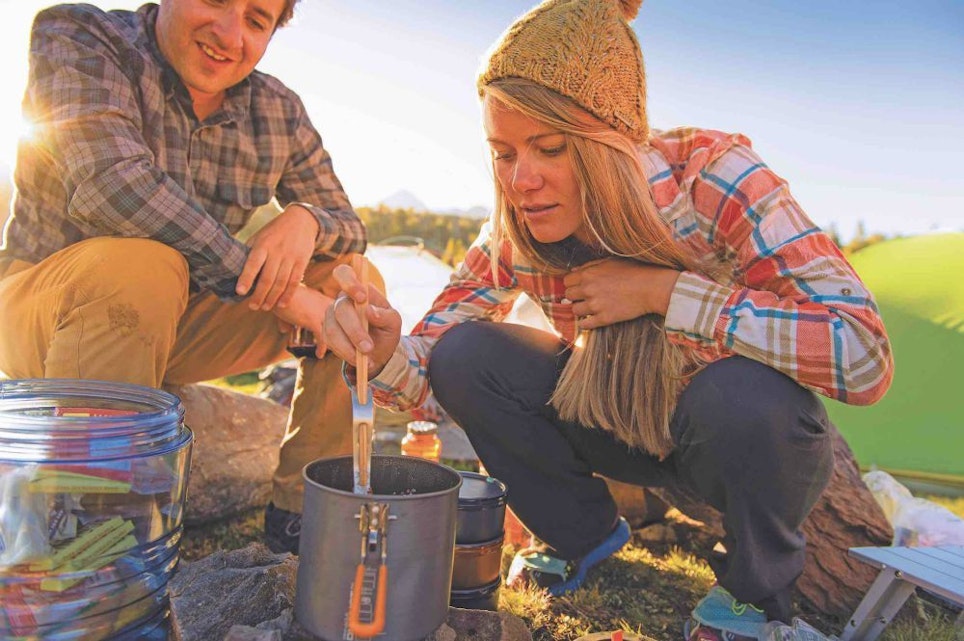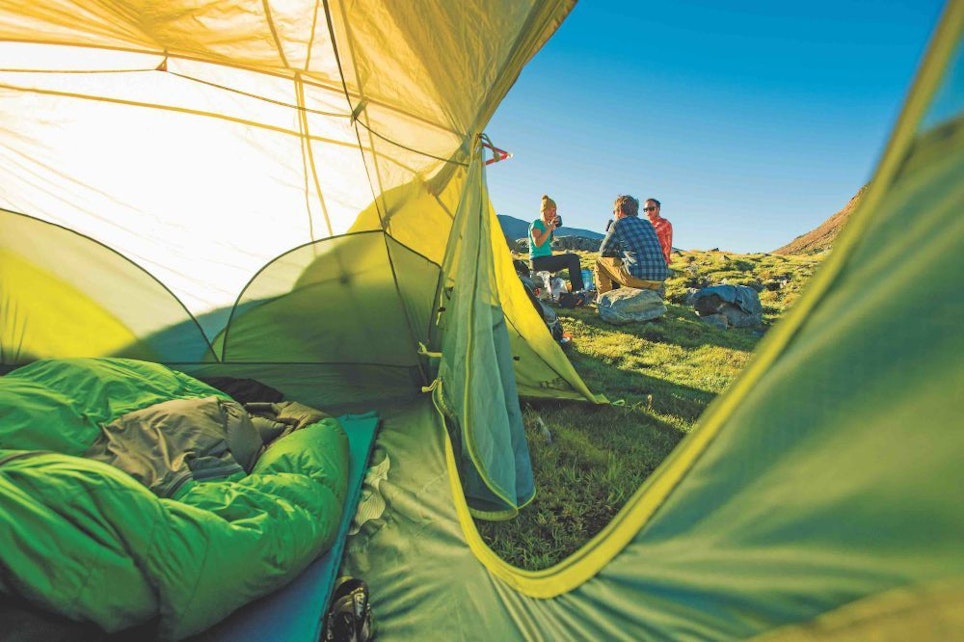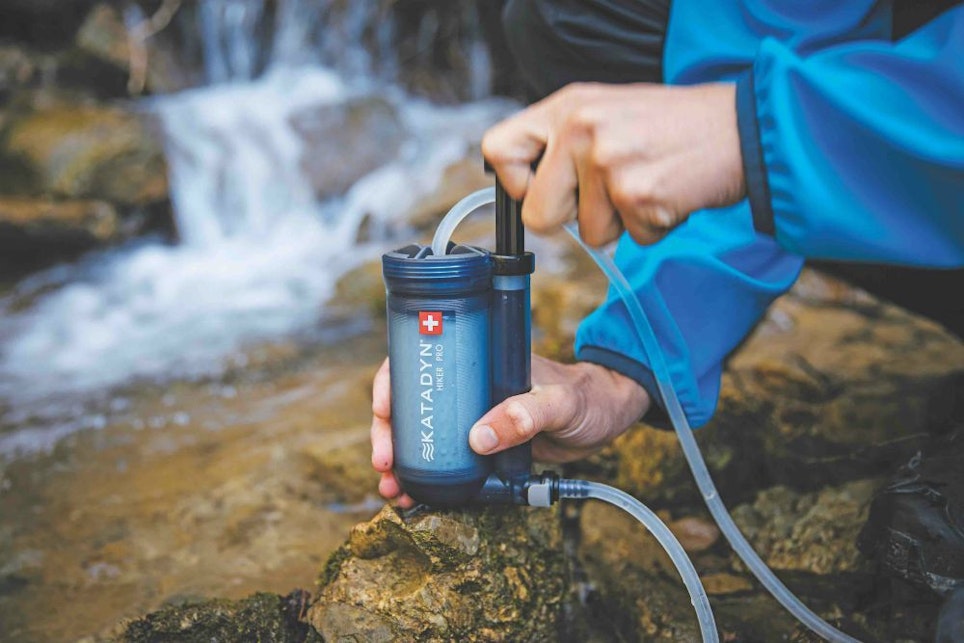For outdoor retailers, there’s good money to be made in camping. Just consider the potential customers in a pastime that appeals to people ranging from hardcore campers who hike or paddle into the wilderness for weeks at a time, all the way down to young families who enjoy spending a weekend or two a year at a nearby state park.
In between those extremes are millions of outdoors lovers who make as many camping excursions as they possibly can each year just because they enjoy being out in nature. According to Kampgrounds of America’s 2018 North American Camping Report, more than 77 million American households include at least one person who camped in 2017, up 20 percent from 2014. And the future of camping looks bright, as the same reports indicated that millennials make up 41 percent of all campers.
Fortunately for those in sporting good sales, camping is a gear-heavy hobby — both products that last for years and items that must be replenished each trip. Of course, all campers need big-ticket items like tents, sleeping bags and ice chests. But they also regularly shop for an astounding number of smaller items that are necessary for a good camping experience.
Retailers who understand these different product categories can use that know-ledge to bolster their bottom lines. Here’s a quick look at 9 small camping items that can yield big profit for your retail outlet.
1. Compact Cook Stoves
Many people who camp in easily accessible spots buy large, heavy camping stoves and cook elaborate meals. Conversely, most who pack or paddle into the backcountry would rather have a small camp stove, which can still get the job done quite well if a gourmet meal isn’t required every evening.
Small stoves that come with a carrying case are handier for those trekking into the wilderness. Favorites of many backcountry campers are the tiny backpacking stoves made by GSI Outdoors, Odoland, MSR and others. For the GSI unit, the stove and two bowls all fit inside the small pan that acts as the carrying case and is also used to heat water or cook other items.
Whether you stock stoves that are powered by liquid camp fuel or use self-contained fuel canisters, make sure you have fuel available to go with the stoves.
2. Fire Sticks
Fire starting supplies might seem like just a nice camping convenience, but they can also be lifesavers if the weather turns bad and you need a fire for survival. Of course, camp fuel can be used to start a quick fire if necessary, but most campers have a limited supply of fuel for cooking, and using it as a fire starter can be dangerous.
Waterproof fire sticks are one of the best options for starting campfires, even in wet weather with wet wood. Most commercial sticks are made of compressed sawdust and infused with an accelerant to help them burn long enough and hot enough to ignite your kindling. Most burn for five minutes or more, and many are waterproof enough that they can be lit even after being submerged. Several companies make fire sticks, but the most common are made by Coghlans.
3. First-Aid Kits
A good first-aid kit can also be a lifesaver, although campers are more likely to use it to patch up small cuts, burns or other wounds that come along with time in the outdoors. Many basic first-aid kits will do the job for most camping mishaps, but stocking kits with some specialized items will go a long way toward providing camping customers with what they need.
Here’s a list of items that should be included in a camping first-aid kit: adhesive bandages, butterfly bandages, gauze pads of various sizes or gauze rolls, antiseptic creams or ointments, sterile wipes and rinse solutions, pain and anti-inflammatory medicine, hydrocortisone cream, tweezers, scissors, safety pins, a knife, sunburn relief spray or gel, anti-diarrhea medicine, antihistamine for allergic reactions, eye drops, moleskin, hand sanitizer, super glue, EpiPen, and a compact emergency blanket.
4. Sleeping Pads and Pillows
Sleeping pads/mats are also basic necessities since they can literally make the difference between getting a good night’s sleep or lying awake all night thinking of a cozy bed back home. Campers typically pick what kind of sleeping pad/mat they need based on what type of camping they will do.
Campers who drive right up to their campsites often prefer large, inflatable air mattresses that can be aired up easily with an electric pump powered by their car’s auxiliary outlet. Those who will be carrying their pad into the backcountry, however, need something light that compacts down to an easily portable size. Many of these weigh only a few ounces, and some pack as small as a soda can. Carrying a good selection of each type of pad gives shoppers plenty of choices. AirExpect, Outdoorsman Lab, OlarHike and Teton Sports all offer good options.
Having a good camp pillow can also result in more comfortable sleep. While hauling a full-size pillow on a weekend car camping trip is fine, for more wilderness-type expeditions, the lighter a pillow is and more compact it can be packed, the better.
Camp pillows generally are either easily inflatable with just a handful of puffs or are small regular pillows filled with stuffing. Neither are quite as comfortable as your pillow back home, but both are very compact. Many companies make camp pillows, including Kelty, Magellan, Wenzel, Wise Owl, Trekology, Titan and Nemo.
5. Camp Chairs
While much of the allure of camping is the “roughing it” aspect, sitting on rocks and logs for a long period of time can be a literal pain in the butt. Most campers know a good camp chair can change all that.
For car campers, regular bag-type chairs will meet their needs quite well. For those heading for the backwoods, an ultralight camp chair is better. In a nutshell, if a chair won’t fold down and fit into a case less than a foot long and 3 or 4 inches wide, it’s too big for packing into the wilderness.
Compact camp chairs come in a wide range of prices. Generally, the smaller and more packable the chair is, the higher the price. Carrying a range of price points gives customers plenty of options. Helinox, Moon Lence, Ozark Trail, Sportneer and Alps are good starting points.
6. Water Purifiers
Water filters or purifiers are another critical piece of gear. Filters remove sediment, debris and bacteria from the water, making them fine for water you want to drink that is a little cloudy but otherwise clean. They don’t, however, remove viruses. Water purifiers use chemicals or UV light to remove pollutants from water. Some leave a taste, but they do the job they’re intended to do.
Carrying a selection of both in your inventory is a good way to ensure customers find one that fits their needs. Companies that make filters include Sawyer, LifeStraw, Survivor, Katadyn and Geekpure. Water purifiers are offered by companies like Purinize, Potable Aqua, Mightie and SteriPEN.
7. Headlamps
Few items ever invented are handier around camp than a headlamp. A good headlamp will light up whatever needs lit, whenever it needs it, while leaving campers’ hands free to tend the fire, cook, wash dishes or whatever other chore they are doing after dark.
The best camping headlamps are lightweight, have multiple brightness levels and beam types (spot/flood), and are powered by AA or AAA batteries. Headlamps that tilt up or down are extra handy, and those that are water resistant are more appropriate for camping scenarios. Adjustable head straps are a must, as headlamps need to fit tightly when bare-headed and when wearing a heavy winter hat. Ozark Trail, Petzl, Black Diamond, Foxelli and Nitecore offer lamps with a range of features and price points that will suit any customer.
8. Bug Repellent Devices
Biting bugs go along with camping like gravy goes with mashed potatoes. Consequently, insect repellent is always a necessity, and a frequently purchased necessity, at that. While most people use spray-on or lotion-type insect repellants, electronic repellents are very effective and good products to stock in your camping section.
These devices use a small fuel cartridge to ignite a tiny flame that heats replaceable pads infused with insect repellent. Most create a 10- or 15-foot protection zone around you where mosquitoes won’t come. They’re cordless, completely portable, safe and don’t create the mess and odor of typical sprays and lotions.
Thermacell was the first company to market these handy devices and they still offer a good selection. Retailers who choose to carry these devices in their shops should also stock replacement fuel cartridges and repellent pads.
9. Hand Wipes
A container of hand wipes is another camp item that’s not glamorous but can be very useful for a wide variety of purposes. It’s amazing how dirty a person can get in camp, but clean hands are still a necessity for cooking and some other tasks. Wipes can also be used as a substitute for bathing or showering if those options aren’t available to you.
Biodegradable wipes are a plus, as they will break down faster than others. But it’s always best to pack out whatever you pack in. Many companies make hand wipes specifically for campers and other outdoor enthusiasts. Some include Survivorware, HyperGo, Combat Wipes, Bar-D Mountain Gear, Trailblazer and Adventure Wipe.









